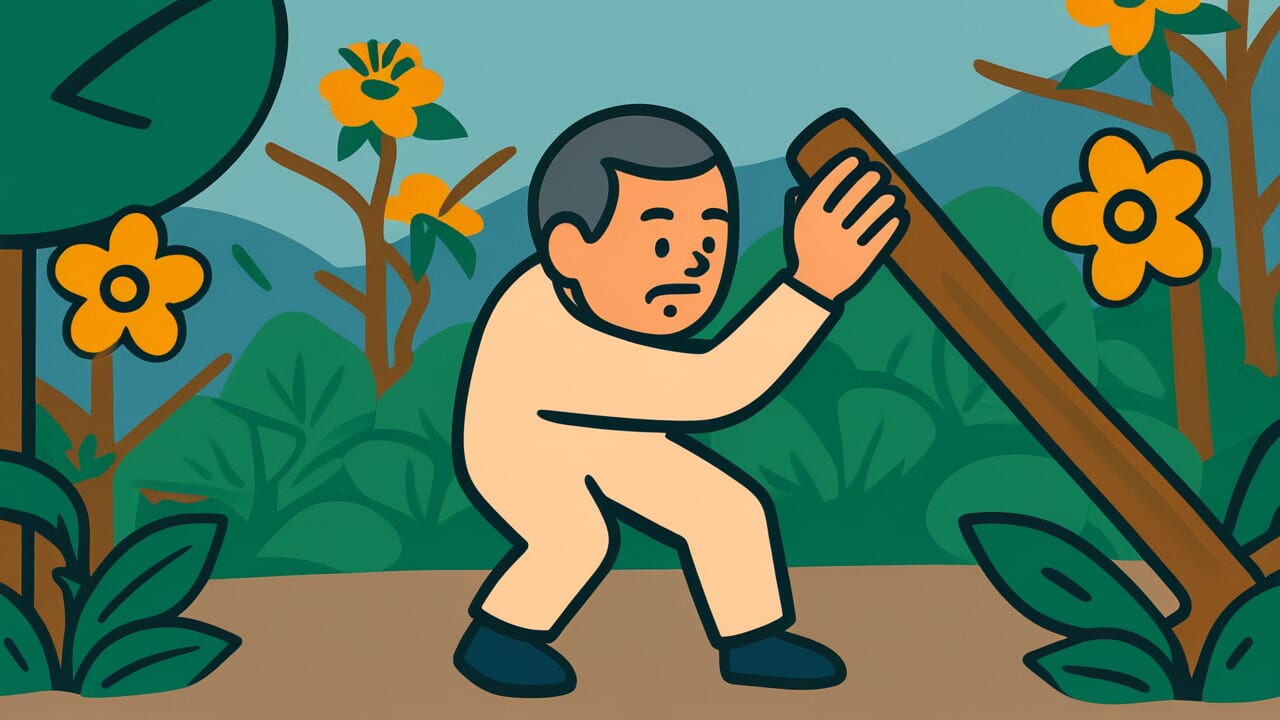How to Read “Straighten the branch and scatter the flowers”
Eda wo tamete hana wo chirasu
Meaning of “Straighten the branch and scatter the flowers”
“Straighten the branch and scatter the flowers” describes what happens when you try to fix something but end up losing what was valuable.
Just like straightening a crooked branch causes the flowers on it to fall, trying to improve something can sometimes destroy what made it precious in the first place.
This proverb applies when well-meaning actions or sincere attempts at improvement lead to unexpected bad results.
It often describes situations where strict guidance meant to fix someone’s flaws ends up destroying their good qualities too.
Or when organizational reforms meant to solve problems end up draining the vitality from the entire organization.
The proverb warns that even when improvement or correction is justified, the wrong approach or excessive force can damage the very values you meant to protect.
Today, this lesson remains important in education, workplace guidance, and organizational reform.
Origin and Etymology
The exact source of this proverb is unclear. However, its structure suggests it came from Japanese gardening culture and nature observation.
The word “tameru” means to straighten something that is bent or crooked.
One theory suggests the expression came from the experience of tending garden trees or bonsai.
When you try to shape a branch and apply too much force, the flowers on that branch scatter and fall.
Japanese garden culture has flourished since ancient times. The techniques of pruning and training tree branches have long been valued.
During this process, people repeatedly made the mistake of losing the natural beauty of flowers while pursuing the perfect shape.
The expression started with the concrete work of tending plants. Then it expanded to broader meanings about human relationships, education, and reform.
The proverb cleverly captures a universal human experience through a scene from nature. Good intentions backfiring is something everyone can relate to.
This saying shows Japanese wisdom in teaching life lessons through familiar activities like gardening.
Usage Examples
- I kept criticizing my child’s faults and ended up making them lose their cheerful personality. It was truly straighten the branch and scatter the flowers
- Pushing efficiency too hard ruined the workplace atmosphere. That’s like straighten the branch and scatter the flowers
Universal Wisdom
“Straighten the branch and scatter the flowers” deals with the universal theme of human desire for improvement and its dangers.
Humans have an instinctive urge to fix imperfect things they see.
When you see a crooked branch, you want to straighten it. When you see a child’s faults, you want to correct them. When you see organizational problems, you want to reform them.
This desire to “make things better” drives human progress. It’s not a bad thing in itself.
However, this proverb has been passed down for centuries because it recognizes a sad human tendency. Good intentions often backfire.
When we become obsessed with improvement, our vision narrows. We focus only on the “flaw” of the crooked branch.
We become blind to the “virtue” of the flowers blooming there.
The deeper insight concerns the psychology of those trying to improve things.
Often, we’re not acting for the other’s benefit. We’re just imposing our own ideals and aesthetic preferences.
Maybe we want to straighten the branch not for the flowers’ sake, but to satisfy ourselves.
This proverb also warns against self-satisfaction disguised as good intentions.
It shows the deep understanding our ancestors had of complex human psychology, expressed through a simple scene from nature.
When AI Hears This
In complexity science, systems have “leverage points” where intervention can occur. Choosing the wrong point can trigger cascading collapse.
This proverb shows a classic example of exactly that.
Systems thinking researcher Donella Meadows pointed out that intervention points have a hierarchy.
Low-level intervention points are “physical structures.” High-level intervention points are “system purposes and values.”
Straightening a branch is a low-level physical intervention. But it affects the flower, which represents a high-level purpose (the plant’s reproductive function).
In other words, the intervention is at the wrong hierarchical level.
What’s more interesting is that this failure comes from “good intentions.”
Tightening rules in organizational reform causes talented people to quit. Trying to fix a child’s posture makes them hate studying.
These all share the same structure. When you directly manipulate visible parts (branches, rules, posture), invisible parts (nutrient flow, motivation, learning desire) get damaged.
In complex systems, it’s mathematically proven that optimizing parts doesn’t optimize the whole.
This proverb captured that principle through experience.
If you must intervene, think at the system’s deep level. Consider “why did that branch become crooked” at the soil and environment level.
The more you fiddle with the surface, the more you lose what’s precious. That’s the ironic truth here.
Lessons for Today
This proverb teaches modern people the importance of pausing to think before trying to improve things.
When you want to fix something, first ask yourself these questions.
“Does this really need fixing?” “Will fixing it cause me to lose something important?”
Seeking perfection too much can sometimes damage the whole.
This lesson is especially important in human relationships.
Before trying to fix someone’s flaws, start by recognizing their strengths and individuality.
In raising children or guiding subordinates, focusing on developing strengths rather than correcting weaknesses often leads to better growth.
This wisdom also applies when considering organizational or social reform.
Improving problems is important. But rapid change or excessive intervention risks destroying the good qualities the organization had.
When you try to change something, don’t force corrections. Proceed gently, carefully, while seeing the whole picture.
Sometimes, the tolerance to accept a little crookedness might be the best way to protect beautiful flowers.


Comments